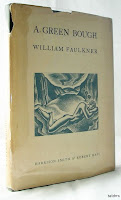Our Feedback!
In the multimedia presentation, our group chooses American southern literature, especially for Southern Renaissance, as the research topic to discuss. The southern literature not only describes the southern history but also shows how family play roles in southern life, a sense of community, and the way southerners live. This reminds me of some southern literature in Taiwan. For instance, a famous masterpiece-原鄉人,written by鍾理和,authentically depicts the Hakka culture in Mei Lun and the life at that time. No high-flown rhetoric can be found in his works; rather, 鍾理和adopts lots of use of local color in each of his works so that readers can easily sense what kind of people the characters are and what kind of life they live.
Compared the American southern literature and Taiwan southern literature, although they stress different kind of cultures and social background, there are still some similarities in between. To begin with, both kind of literature present writers’ persistence and bravery toward society and life. Those southern writers are concerned with their life and the surroundings; therefore, they record how the ordinary people encounter the change because of the social transformation, as well as the difficulties they are confronted with. Due to the enthusiasm for the place they live, those writers face the problems, look for the core, and try to seek the answers through their writings. They live, so they write.
Written by Monica
Our project on southern literature enables me to have a better understanding of the historical background in the south. The civil war is well known, but the impact it had on the south is often drawn out in describing modern US. Learning about southern literature, either from reading works or the context of it, gets my attention to the society I am in. Literary works bring me closer to the struggles and different ideas from groups of people than simply reading the history. The belief in what is right, the clash between different social classes, and the tension in the relationship among family members that are often seen in southern literature can be referred to people outside the south and in different times, and they are facts even today. Take ourselves as an example, we have smaller families, we do not know our neighbors well, and we no longer see the land as a promise like it once was—the life seems so different. However, the advance of time is just something else fitting in for the old ideas: we still have to settle between personal needs and family duty, still care about the community and take a part of it, and go after goals that seem to make life better. The difficulties and mentality remain similar for human across time and space; to know about a culture, others’ or our own, is to know ourselves. As a result, tracing southern literature is a pleasant experience.
Written by Victoria
The first Southern literary work I read is Faulkner’s short story, A Rose for Emily, which depicts the conflicts between the old and the new, the aristocracy and the working-class and the traditional Southern family and the modern society. This story, even with just few pages long, is a start suitable for beginners to grasp a brief image of the South after World War I and American Civil War—the corruption of Southern families, heritage and sense of identity, the slavery and the racial tension, clashes between different generations and class-distinction—all well presented with Faulkner’s delicate diction and detailed background-setting, therefore arouses my passion to do the project, to further understand the Southern cultures and its literary texts.
As more as I read, the clearer the Southern society I imagine and build in my mind is. In As I Lay Dying, a rural countryside in South is vividly presented in Faulkner’s description of rustic scene and peoples’ dialects. In A Rose for Emily, we can see the tension among various races, especially between the white and the black. Thus, the racialism is a main theme in most of Faulkner’s works. In addition, the class distinction—the upper class and the lower one, collides with each other in a same community. But then in the end of the Civil War, come the gradual decay of aristocratic families and the renewal of young generations. The traditions are unvalued and ignored. Old families’ legacy fades as the past glory. The heritage, which once makes the aristocracy proud of themselves, now vanishes, along with the fortunes and the privilege. Their religious belief is also gone with the time passage. And the fluid time, once passing, never comes back and never stops, with all becoming the history.
Faulkner creates a glooming atmosphere in his writings with Gothic element and grotesque and creepy depiction, sometime the black humor to illustrate peoples’ struggles and difficulties of conquering the swift change of time. We, the audience, no matter viewing the texts with sympathy or ignorance, do witness a great adventure in the history of American literature. We do not forget those stories from the contemporary literary master—William Faulkner.
Written by Holly
After reading “A Rose for Emily,” our group chooses “American Southern Literature” as the topic of our final project. Through the focus on As I Lay Dying from William Faulkner and A Streetcar Named Desire from Tennessee Williams, we gradually understand more about the kind of literature. Honestly, in the works of southern literature, it is not easy to discover the symbols which indict its relationship with South. Most of time, authors imply the elements of South with daily, ordinary objects and with the depiction of Southern scenes. Besides, the characters of the story also play a critical role in the Southern Literature because their personality, family background, and relationship with other people usually symbolize the most significant ideas that the authors wish to present. That is, when reading a work related to Sothern literature, people should pay attention to not only the plot of the story but also minor points, such as the background of characters and of the story, or the attitude from the community toward the protagonists.
As for the theme of Southern literature, the decay of the old South, and the conflict between the old and the new south are the major parts. For example, Faulkner’s two works: A Rose for Emily and As I Lay Dying, demonstrate the death of old, traditional Southern society through the description of characters, horrible elements and so on. The author in these works also shows readers the concept about the importance of family and the power of community toward one person. Another Southern writer, Tennessee Williams, in A Streetcar Named Desire, expresses that New South replaces Old South after industrialization with a scene that a working class man rape a used southern-belle woman.
In conclusion, I think that southern writers did not feel comfortable when experiencing the historical change in the Southern America. After all, most of their works give me a sense of sorrow for the Old South.
Written by Tiffany
picture from:
http://rworg075.wordpress.com/2011/05/17/back-to-basics/






























